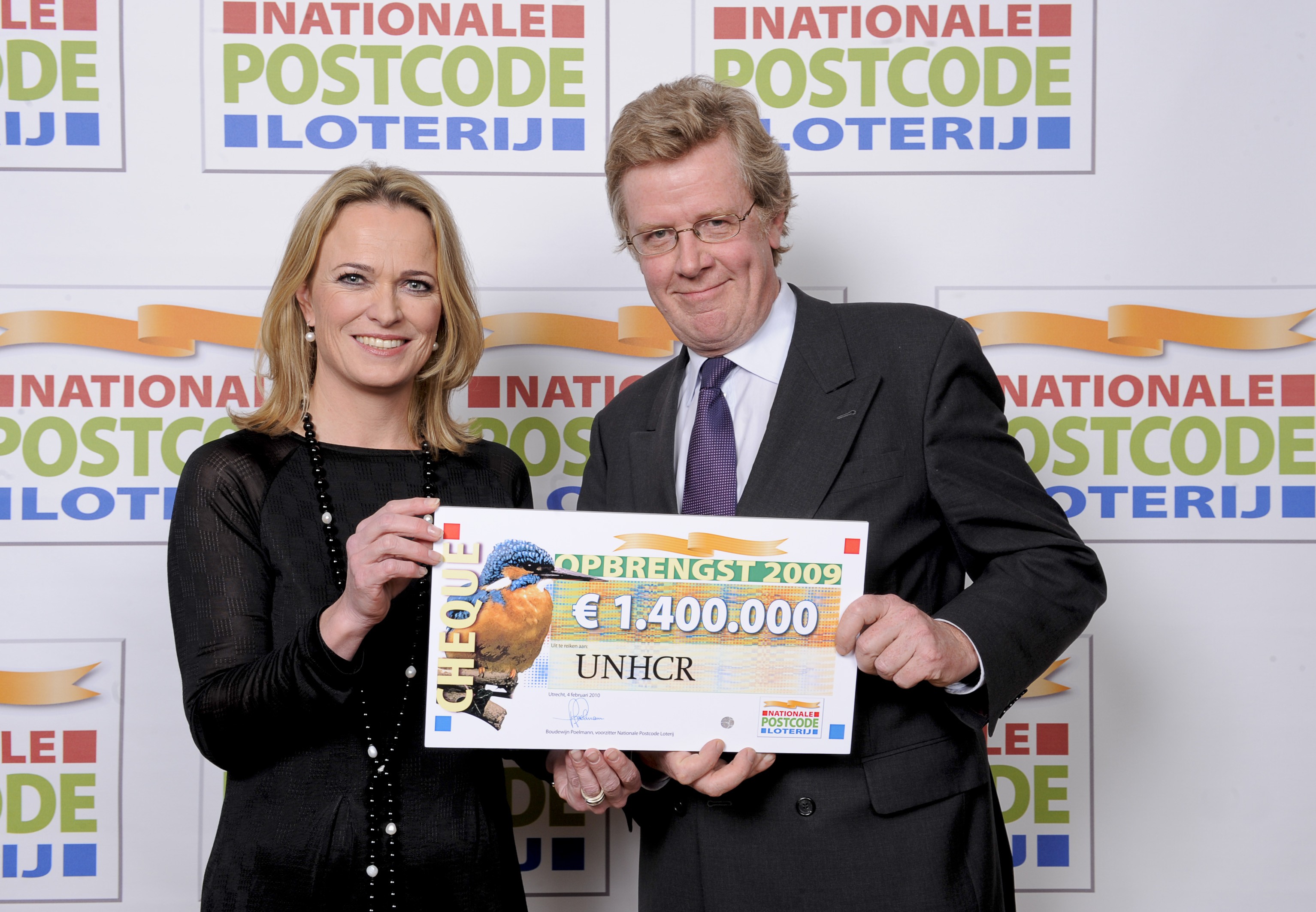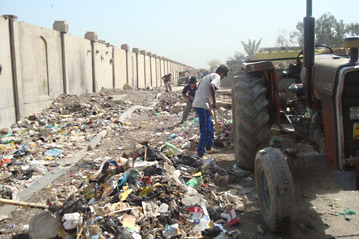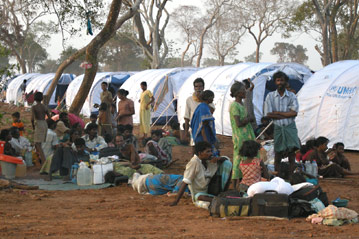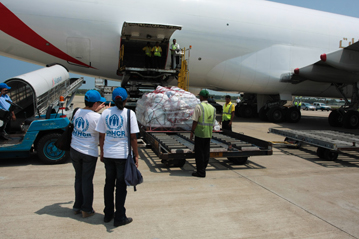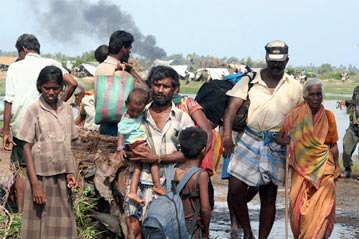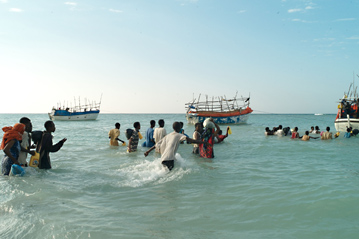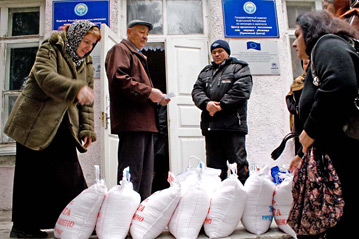Fiftieth Anniversary of the Hungarian uprising and refugee crisis
Fiftieth Anniversary of the Hungarian uprising and refugee crisis

GENEVA, October 23 (UNHCR) - Fifty years ago today, on October 23, 1956, a student demonstration in the Hungarian capital Budapest triggered one of the tensest periods of the Cold War, as well as a remarkable response to the ensuing refugee crisis which brought substantial benefits to future generations of refugees all across the world.
As October 23 progressed, tens of thousands of people poured on to the streets - and the initial demonstration in support of the restive population of Poland quickly turned into a full-scale revolt against the regime and its Soviet masters, which for a few heady days seemed to have succeeded.
However, the Soviet tanks rolled back into Budapest on November 4, and the revolution was soon crushed. The city endured days of heavy shelling and street battles, and people started to flee to neighbouring Austria.
During the weekend of November 4-6, some 10,000 Hungarians entered Austria. Entire classes - even entire schools - began crossing the loosely guarded border. Students, teachers, doctors, famous athletes and footballers, farmers, architects and labourers all started streaming in to Austria.
It was the first major crisis to appear on television, as well as in newspapers and on cinema newsreels, and people across the world were shocked to see the scenes from Budapest and the snow-covered border.
By November 16, the number of refugees had risen to 36,000 and as of the end of November, it stood at 113,000. By the time the borders were sealed, a total of 200,000 had fled (180,000 to Austria and 20,000 to Yugoslavia).
Within days of the exodus starting, an extraordinary operation sprang up in Austria, not only to care for the refugees, but to move them out of the country almost as fast as they arrived. In the end, 180,000 were resettled from Austria and Yugoslavia to 37 countries. The performance of the Austrians, the aid agencies and the resettlement countries has rarely, if ever, been matched since.
"Both governments and people were tremendously committed to help the people fleeing from Hungary at that time," UN High Commissioner António Guterres said on the eve of the 50th anniversary of the uprising. "It was the first movement in which refugees were recognised en masse. We had 100,000 people resettled in the first 10 weeks - which I think is inconceivable today."
In Vienna, a committee was immediately set up comprising the Austrian Interior Minister Oskar Helmer and his staff, UNHCR, the Intergovernmental Committee for European Migration (ICEM), and the League of Red Cross Societies (LRCS), as well as a number of local and international NGOs.
It was decided that the LRCS would be the prime mover on the assistance front, and would also help ICEM, whose prime task would be to assist the registration, documentation and transport of refugees out of Austria. UNHCR would deal with the over-arching legal and protection issues, as well as the integration of those who remained in Austria. Helmer also wanted UNHCR to be the overall coordinator - or "lead agency" - a role that was subsequently confirmed by the General Assembly.
On the face of it, UNHCR was not in the best position to handle such a task. For one thing, it was only a temporary organisation with a mandate that was due to expire in 1958. Secondly, it was without a High Commissioner - in July, Gerrit van Heuven Goedhart had died of a heart attack and his replacement, Auguste Lindt, was not elected until December. But the agency's other senior staff proved more than capable of handling the challenge.
After a chaotic start, the relief and resettlement operations proceeded remarkably smoothly. The three coordinating agencies and many of the NGOs that worked with them put up an exceptional performance.

Within a few days of the first refugees arriving, a massive effort was launched to resettle the Hungarians. Over the following months, they were transferred by bus, train, boat and plane to 37 different nations on five continents. The United States and Canada each took in around 40,000, while the United Kingdom accepted 20,000 and Germany and Australia some 15,000 each. Two African and 12 Latin American countries also took in Hungarians.
Looking back, perhaps the most striking aspect was the sheer pragmatism and flexibility of the principal actors - especially the states. It was the first major refugee relief operation of its kind and the rule book was only partly written. For one thing, there was uncertainty as to whether the Hungarians were technically refugees under the 1951 UN Refugee Convention, and whether UNHCR had a mandate to deal with them.
UNHCR, supported by Austria, decided it had, and the states agreed. Article 6B of UNHCR's Statute seemed clearly to cover the situation. But, according to the definition in the 1951 Convention, weren't refugees only the product of events that took place prior to 1951? And didn't refugees have to be assessed individually?
UNHCR's chief legal adviser, Paul Weis drew up an argument that satisfied the legal criteria relating to the cut-off date in the Convention definition. In addition, UNHCR's Statute was used as the basis for deciding that a group arriving en masse, such as the Hungarians, could be recognised 'prima facie' - an extremely important development in international refugee law and practice. And one which has benefited tens of millions of refugees.
The 1956 uprising and its aftermath helped shape the way humanitarian organisations - not least UNHCR - were to deal with refugee crises. The episode also left an indelible mark on international refugee law and policy.
"I remember - I was a young boy at the time - and it was so impressive, so strong. The reaction of the international community was tremendous," Guterres said. "After the Second World War, many thought that this was the end of refugee crises." However, he continued, the Hungarian uprising "showed that problems like that will continue happening time and time again, and that the international community must be prepared in a generous, open way to deal with refugee problems."
Many of the Hungarians crossed the borders with the help of smugglers, and many arrived without ID papers - but it did not tarnish their image or impede their acceptance as refugees. In some ways little has changed in the world of refugees, except perhaps that 50 years later the world seems much less inclined to respond with such spontaneous hospitality.
"The international community got used to so many international crises," said Guterres. "And unfortunately today we are witnessing situations in which the amount of suffering is much greater than what we saw in Budapest - and the indifference is also much greater."



